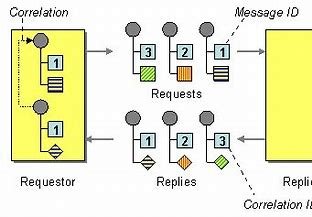In the intricate world of financial markets, where billions of transactions occur daily, maintaining clarity and efficiency is paramount. The Unique Trade Identifier (UTI) has emerged as a powerful tool to achieve this goal. This unique identifier, assigned to each individual financial transaction, serves as a digital fingerprint, enabling seamless tracking, reconciliation, and regulatory compliance.
What is a Unique Trade Identifier (UTI)?
A UTI is a globally unique alphanumeric code that identifies a specific financial transaction. It functions as a consistent reference point throughout the entire lifecycle of a trade, from inception to settlement and beyond. This identifier is typically generated by one of the counterparties involved in the transaction and is shared with all relevant parties, including trade repositories, regulators, and market participants.
The Importance of UTIs in Financial Markets
The implementation of UTIs has brought about several significant benefits to the financial industry:
Enhanced Transparency: By assigning a unique identifier to each transaction, UTIs increase transparency within the financial markets. This transparency allows market participants, regulators, and other stakeholders to gain a clearer understanding of the underlying activities.
Improved Risk Management: UTIs facilitate effective risk management by enabling the identification and tracking of potential risks associated with specific transactions. This helps financial institutions to assess their overall risk exposure and take appropriate measures to mitigate those risks.
Streamlined Reconciliation: UTIs streamline the reconciliation process between counterparties. By using a common identifier, discrepancies and errors can be identified and resolved more efficiently, reducing operational costs and improving the accuracy of financial records.
Regulatory Compliance: UTIs play a crucial role in ensuring compliance with various regulatory requirements. By providing a standardized way to identify and track transactions, UTIs help financial institutions meet reporting obligations and adhere to regulatory standards.
Facilitated Data Analysis: UTIs enable the collection and analysis of granular transaction data. This data can be used to identify trends, assess market behavior, and inform decision-making processes.
How UTIs are Generated and Used
The process of generating a UTI typically involves the following steps:
Transaction Initiation: When a financial transaction is initiated, one of the counterparties is responsible for generating a unique identifier.
UTI Assignment: The generated UTI is assigned to the specific transaction.
Communication and Sharing: The UTI is communicated to all relevant parties involved in the transaction, including the counterparty, trade repositories, and other relevant institutions.
Transaction Lifecycle: The UTI remains associated with the transaction throughout its entire lifecycle, from inception to settlement and any subsequent modifications or amendments.
Once generated, UTIs are used in various ways, including:
Trade Confirmation: UTIs are included in trade confirmations to ensure that both counterparties have a common understanding of the transaction details.
Trade Reporting: UTIs are used to report trades to trade repositories, regulatory authorities, and other relevant bodies.
Reconciliation: UTIs facilitate the reconciliation process between counterparties by providing a unique identifier for each transaction.
Data Analysis: UTIs enable the collection and analysis of granular transaction data, which can be used to identify trends, assess market behavior, and inform decision-making processes.
The Future of UTIs
As the financial industry continues to evolve, the importance of UTIs is likely to grow. With advancements in technology and increasing regulatory scrutiny, UTIs will play a vital role in ensuring the integrity, transparency, and efficiency of financial markets.
The Role of UTIs in Regulatory Compliance
UTIs are a cornerstone of regulatory compliance in the financial industry. They are mandated by various regulatory bodies worldwide, including the European Union’s Markets in Financial Instruments Directive (MiFID II) and the U.S. Dodd-Frank Act. By ensuring that every transaction has a unique identifier, regulators can:
Monitor Market Activity: Track and analyze market trends, identify potential risks, and detect fraudulent activities.
Enforce Regulations: Verify compliance with reporting requirements and other regulatory obligations.
Conduct Investigations: Trace the lifecycle of specific transactions and identify any irregularities.
The Technical Aspects of UTIs
Structure: UTIs typically consist of an alphanumeric code, often with a specific length and format defined by regulatory standards.
Generation: UTIs are usually generated by one of the counterparties to a transaction, often using a combination of:
Legal Entity Identifier (LEI): A unique identifier for legal entities.
Randomly Generated Characters: To ensure uniqueness.
Communication and Sharing: UTIs are shared between counterparties, trade repositories, and other relevant parties through various channels, including electronic messaging systems and trade confirmation platforms.
Challenges and Future Trends
While UTIs have significantly improved the transparency and efficiency of financial markets, there are still challenges to overcome:
Data Quality: Ensuring the accuracy and consistency of UTI data across different systems and jurisdictions.
Interoperability: Developing standards and protocols to facilitate the seamless exchange of UTI data between different market participants.
Cybersecurity: Protecting UTIs from cyber threats and ensuring the security of sensitive transaction data.
As technology continues to advance, we can expect further developments in the use of UTIs. Some potential future trends include:
Blockchain-Based UTIs: Leveraging blockchain technology to create immutable and transparent records of UTIs, enhancing security and reducing the risk of fraud.
Artificial Intelligence and Machine Learning: Utilizing AI and ML to automate the generation, validation, and reconciliation of UTIs, improving efficiency and accuracy.
FAQs
What is a Unique Trade Identifier (UTI)?
A Unique Trade Identifier is a unique alphanumeric code assigned to a specific financial transaction. It serves as a digital fingerprint, enabling seamless tracking, reconciliation, and regulatory compliance throughout the entire lifecycle of a trade.
What is the future of UTIs?
As the financial industry continues to evolve, the importance of UTIs is likely to grow. With advancements in technology and increasing regulatory scrutiny, UTIs will play a vital role in ensuring the integrity, transparency, and efficiency of financial markets.
In conclusion, Unique Trade Identifiers have become an indispensable tool in the modern financial landscape. By providing a standardized way to identify and track financial transactions, UTIs contribute to greater transparency, risk management, and regulatory compliance. As the financial industry continues to evolve, UTIs will remain a cornerstone of efficient and reliable market operations.
To read more, click here.

Leave a Reply